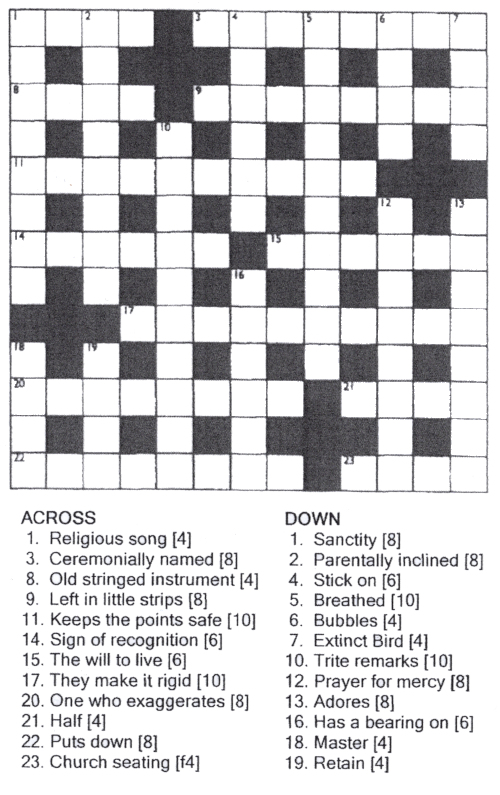
Edition 148 - February 2014

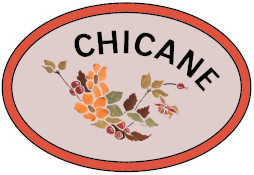
EDITORIAL
Christmas is over and we are now well into the new year. The village festivities were enjoyed by all and special mention must be made of the wonderful singing of our Primary School Choir at the Carol Service held on a really foul night . . . and talking of weather, it has been horrendous with torrential rain and tidal surges.
The healthy crop of Christmas messages helped the Manor Hall and Newsletter, both suffering from ailing funds and the dark and dreary days have brought the inevitable coughs and colds and other ailments. To those who could wish for better health, we send our good wishes for speedy recoveries and we hope you will be feeling better soon.
We also send good wishes to all newcomers to the village and those who have moved away.
The evenings are drawing out and the mornings getting a little lighter - spring IS on its way! Don't forget to put clocks forward an hour on the night of 29th/30th March or you may miss the Mothering Sunday Service!
Below are the deadline dates for forthcoming issues which will hopetully be helptul, especially for the regular contributors:
- 12th March for April issue due out 3rd April
- 7th May for June issue due out 29th May
- 9th July for August issue due out 31st July
- 10th September for October issue due out 2nd October
- 5th November for December issue due out 28th November
- 7th January for February issue due out 29th January
There are lots of interesting articles once again in this issue and thank you to not only the regular contributors but everyone else who has put pen to paper or e-mailed me with articles, and Paul, our Artist in Residence. I'll look forward to another batch of contributions for the April issue as soon as possible and by the 12th March at the latest.
Judie - Ed
1
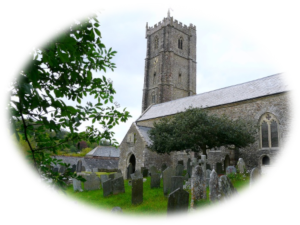
ST. PETER'S CHURCH
A wonderful Christmas was spent
at St. Peter's. The church was
beautifully decorated, again thanks to Sue and her team, with the tree and the
added touch of candles on the window sills.
In spite of the weather, the church was packed for the Carol Service and
the Christmas Eve service was well-attended with more people taking communion
this year. A Family Service was held
on Christmas morning with Rev. Chris bringing along a family of sheep to
delight the children. The Epiphany
[arrival of the three wise men] was celebrated on 5th January with Celia
Withers coming over to lead the service.
It is now time to put away the crib and carol sheets for another year!
January and February will give us time to recharge our
batteries although the PCC will be holding their annual meetings to look back
over 2013 and make plans for the year ahead.
A second churchwarden is needed by March to join Teresa Crockett and
lighten her load.
Easter is not until the third week-end in April and Lent
will begin with Ash Wednesday on the 5th March. Mothering Sunday falls on 30th March which
will also mark the beginning of British Summer Time.
As we look forward to spring, we wish everyone every
blessing for 2014 and our thoughts and prayers are with those of us who are
contending with ill-health.
Friendship lunches will continue at The Globe and will be on Wednesdays 26th February and 26th March. Our thanks to Karen and staff for their constant hospitality - we are about to embark on our fifteenth year!
Mary Tucker
Due to the atrocious weather on the evening of the Carol
Service, the toddlers from the School performed their carols in the church to a
large gathering of parents. Their costumes
and singing were a delight and how they managed to remember all the music is a
tribute to the dedication, time and effort of the teaching staff at our school.
The Carol Service got underway with soloists Louis and Holly
singing, unaccompanied, the first verse of Once in Royal David's City, and the
first lesson read beautifully from the pulpit by Poppy and Melanie.
The service continued with the
singing of popular carols.
The school choir performed a beautiful carol sung in both
French and English, the first time the choir has sung in a foreign language and
they received well deserved applause from the congregation. Our choir then sang two
carols, Oh Little Town of Bethlehem and a joyful rendering of Malcolm Archer's
A Child is Born in Bethlehem.
Then it was the turn of the school choir who sang two
Christmas songs, the last, Bells Ring Out, was superbly sung with ability and
fun which brought rapturous applause from everyone in the church.
How hard the school choir has
worked to sing with such quality and style and again many congratulations and
thanks to all those teachers who have put in so much time behind the scenes.
The final carol, O Come All Ye Faithful, was a rousing
finale and the evening ended with mulled wine and mince pies!
Thanks to the Rector for leading the Service and to all
those helpers who contributed to a memorable evening.
Stuart
. . . and many thanks to
Stuart for all his effort and dedication to the great music enjoyed in our
church.
2
CHRISTMASSY CROSSWORD SOLUTION
Mike Hancock
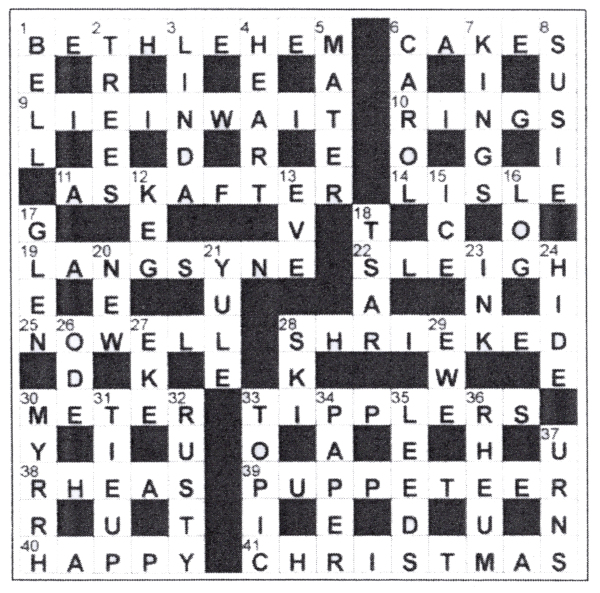
Thanks again to Mike for another Christmas Crossword and for providing a prize, and thank you to all who sent in entries. The winner is Janet Gibbins from Coastguard Cottages. Congratulations Janet!
3
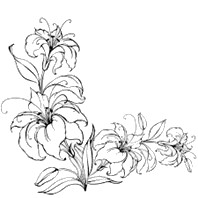
IN MEMORIAM
Be not like others, sore undone, who keep
Long vigils by silent dust and weep.
For my sake, turn again to life and smile,
Nerving thy heart and trembling hand to do
Something to comfort weaker hearts than thine.
Complete the dear unfinished tasks of mine
And I perchance may therein comfort you!
Mary Lee Hall
CECIL HODKINSON
[3.4.1911 - 29.11.2013]
Villagers were sorry to learn
that Pip's father, Cecil Hodkinson, had died on the 29th November and our
thoughts are with Pip, Tony and all his family at this time of sorrow.
It is sad to report the death of Berynarbor's oldest
resident, Cecil of Philton House, Barton Lane.
Cecil lived in the village for 13 years and despite some
lack of mobility after a stroke, was very independent and still looking after
himself virtually unaided long after reaching the 100 year milestone. He moved to Edenmore Nursing Home in
Ilfracombe in late October following hospitalisation after some falls, which
unfortunately seemed to have knocked the stuffing out of him and his health
declined rapidly and he sadly died in Edenmore at the end of November at the
grand old age of 102. Thankfully he did
not suffer any pain or prolonged illness and died peacefully in sleep after a long,
constructive life.
Pip,
Tony and family would like to thank everyone for their kind thoughts and
condolences at this time of sadness.
FRED BROWN
It was with sadness we learnt that Fred, formerly of Devon
Cottage, Hagginton Hill, had sadly passed away after a prolonged illness on the
22nd November. Fred and Linda had many
happy years in Berrynarbor, all the memories of which are cherished. Our thoughts are with Linda, their three
children and five grandchildren at this time of sorrow.
4

WEATHER OR NOT
The beginning of November was very wet
and windy with a maximum gust of wind of 40 knots on the 2nd and a wind chill
of -3 Deg C on the 4th.
By the 9th we had recorded 80mm of rain,
then we flew off to sunnier climes returning on the 6th December. Most of the records, therefore, are for the
two months combined. The total rain was
318mm, the maximum temperature was 15 Deg C with a minimum of -0.1 Deg C and there was
a wind chill of -8 Deg C on the 24th December.
Between our return from holiday and the end of the year we recorded nine
gales or storms, it felt as though we had come back in the middle of the
hurricane season! The barometric
pressure was below 1014mb most of the time and on the 23rd
December it dropped to 976mb. We did,
however, fare better here than in South Devon and other parts of the country.
The recorded 19.06 hours of sunshine in
November was actually more than in the previous three years and in December
there were 6.42 hours which was also up on 2012 and 2013.
Despite the terrible weather in December
2013 it was a dry year with a total of only 1070mm which made it the third
driest year we have recorded after 2006 and 2010. The maximum temperature was 28.9 Deg C, the
minimum was -2.7 Deg C and there was a wind chill of -20 Deg C on the 12th March. The barometric pressure peaked at 1037mb in November and
troughed at 976mb in December.
As we write this the weather is still
mild and very unsettled with yet more stormy weather forecast, at least we are
past the shortest day and heading in the right direction.
We wish everyone a Happy, Healthy and
Peaceful New Year (and some decent weather).
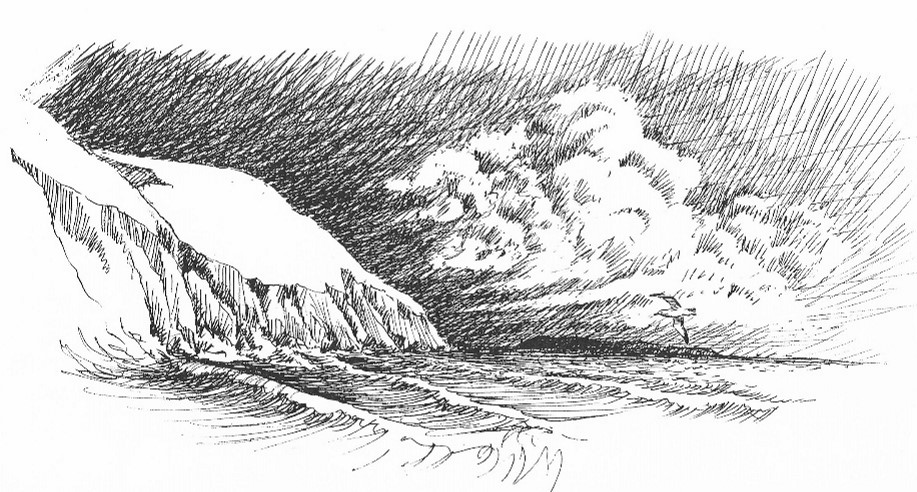
Illustration by: Peter Rothwell
Simon
and Sue
5
FEBRUARY & FINANCE
F is for February but also Finance and
once again the time has come to look at the financial situation of the
Newsletter and its funds.
Funds at present are
critical and need a desperate top up!
Last year's successful Activity Day
will again be taking place, on Saturday 15th February and full details
appear later in this issue. A Nearly
New and Jumble Sale has also kindly been arranged to help swell the
coffers, and this takes place on Saturday, 8th March and again you will
find details later. So, please make a
note of these dates and drop in to the Manor Hall to make these events a
success.
Although costs have continued to rise over the last year,
the subscription for postal readers for the coming year will remain the same at
£6.00 [February to December, inclusive].
Although the Newsletter is technically a 'freebie', the postal rate only
covers the cost of postage and stationery, so it is very much hoped that those
readers will include a donation to help keep the Newsletter out of the
red!
This plea also applies to readers who
receive their copy with their paper, or collect a copy from the Shop, Globe or
Sawmill Inn.
With all the increasing costs involved
in producing the Newsletter - our Printer, my stationery, printing inks,
telephone, petrol, etc., [but not my time!]
- the cost of a single newsletter amounts to approximately £1.40. It is only by kind and generous donations
from all readers that it can continue.
However, I must thank you all for your past donations as well as the
continued financial support of the Parish and Parochial Church Councils.
Some postal subscriptions have now run
out and if you are someone to whom this applies, a letter is enclosed with your
Newsletter.
My thanks to Sue's of Combe Martin and
our paperboys, Terry and Mick, who deliver copies with the newspapers, the
Shop, The Globe and the Sawmill Inn for having copies available and for
collecting donations.
Judie
- Editor
6
THANKS
Many thanks to all those people who ordered their Berrynarbor Christmas trees through the village shop thus supporting their local community. Next year the shop will be taking orders from an earlier date and there will be the opportunity to purchase even bigger trees!
Wishing you all a Happy and Healthy New Year.
Easter Barton
The Berrynarbor Toddler group would like to say a big thank you to Songbird for making our new toy cupboard in the Bassett Room so well and so swiftly.
Happy New Year Gary from the "Smalls"
7
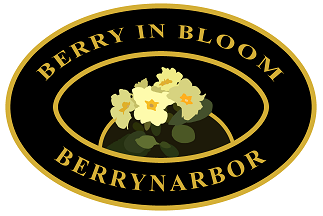
BERRY IN BLOOM & BEST KEPT
VILLAGE

This winter is proving to be very stormy
and wet although the temperatures have so far not been too cold and the pansies
and cyclamen have been flowering well in the planters around the village. Shortly the daffodils will be cheering us all
up and the days lengthening. Spring is
just around the corner and we will be holding our first meeting of the year on
February 25th at 7.30 in the Globe.
Please try to come along and support us as we are always looking out for
help and new ideas. We will again be taking the hanging baskets over to
Georgeham to be filled and you are welcome to join this scheme, just let me
know Tel. Wendy on 883170. This coming
year we hope to have Berrynarbor open gardens again.
Wendy Applegate
8

Are you trying to eat a bit
healthier after the excess of Christmas and New Year? Well this could be the
recipe for satisfying your sweet tooth without feeling too guilty.
Oaty fruit bars [makes 12 bars]
- 250g unsalted butter
- 175g light soft brown sugar
- 150g golden syrup
- 100g dried apricots
- 100g dried figs
- 50g dates
- 350g oats
- 50g pumpkin seeds
- 25g sesame seeds
(If you want you can substitute the
seeds for chopped nuts or the figs for example for dried cherries or
cranberries)
Pre-heat oven to 160 Deg C, fan 140 Deg C,
gas mark 3
Line a 20cm square loose based baking
tin with baking paper. In a large pan
melt the butter, sugar and golden syrup together over a gentle heat. Let the mixture bubble and reduce for about 5
minutes until thickened and syrupy.
Meanwhile roughly chop the fruit but
keep separate. Combine the oats and seeds in a large bowl and pour the hot
syrup over and stir well. Press half the
oat/seed mixture into the tin then spread the fruit mix over and then use the
remaining half of the oat/seed mix to top the fruit. Smooth over and press down firmly with the
back of a spoon.
Bake in the pre-heated oven for 25-30
minutes or until golden and starting to firm around the edges. Remove from the oven and allow to cool for 20
minutes then cut into 12 squares while still warm. Leave to cool completely in the tin.
Well perhaps a
good brisk walk should precede these to make them healthy!
Wendy Applegate "I tried the Christmas Chutney recipe in the
last edition. Absolutely delicious and
when it was slowly cooking on the Rayburn the aroma filled the whole bungalow
with the smell of Christmas cooking. I'm going
to make double for this year." Sue Squire
9
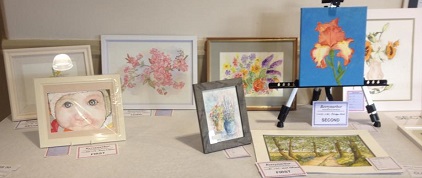
BERRYNARBOR HORTICULTURAL & CRAFT SHOW
News for 2014
Advance Notice:
Categories for the following groups are as follows:
Floral Art:
- Take 3 glasses 16" x 16" x 18" high
- 1914 in Memoriam 16" x 16" x 18" high
- Junkyard 18" x 18" x 24"
- War Medal - miniature 6" x 6" x 6"
Art:
- Sunrise or Sunset
- Stormy seashore
- Garden life
- Painted item on any surface other than paper, card or canvas, e.g. glass, pottery, stone, wood, slate etc. Any subject.
Maximum size for all classes must not exceed A3 (297mm x 420mm)
Photography:
- Reflections
- Animals at play
- Watersports
- Flowers
- Farm Life
- Anything goes
- Stormy Seas [humorous] may be enhanced in any way
Photographs must be maximum 5 x 8 to be affixed to white card or paper size A5 for display purposes. Entries limited to 2 photographs per class.
10
DIY and TAKE IT HOME
ARTS & CRAFTS DAY
Drop in to the Manor Hall any time from 10.30 a.m. onwards on
SATURDAY, 15TH FEBRUARY
FLORAL ART with SUE
A flower arrangement with a twist £5.00
CAKE DECORATION with JAN
Make sugar-paste decorations for a cake £4.00
STAINED GLASS with LANI £12.00
Make a stained glass panel from ready-cut glass. Do your own soldering or Lani will do it for you, and take home a piece of work worth £20.00!
CARD MAKING with MARGARET
Make a card (with envelope) for that special occasion £2.50
PEBBLE & PLANT POT PAINTING with CHRIS
Decorative painted objects from £2.50
FELTING PICTURES with SARAH from £3.00 depending on size
ALL MATERIALS AND EQUIPMENT WILL BE PROVIDED
So come empty handed but with a pocketful of money!
Entry £2.50 to include either Morning Coffee or Afternoon Tea
Lasagne Lunch £4.00, Soup £3.50
- The day will be open to EVERYONE, children, parents and grandparents!
- Take part in one or more or even all activities.
- Start any craft at any time - each can take approximately an hour or just as long as you want.
PLEASE SUPPORT THIS EVENT IF YOU CAN
Proceeds for the Berrynarbor Newsletter
11

PRE-SCHOOL NEWS
Happy new year to all our
families and friends! We must say a huge thank you to all who
attended the bingo night at the end of November. A massive £300 profit was made to be split
between School and Pre-school. We are hoping to hold another bingo night just
before Easter, look out for the posters and tell all your friends what a good
time you had at the last one!
We continue to raise funds
for our outdoor classroom project. We are holding a Jumble Sale on 1st March and
are looking for donations of clothes, CDs, DVDs, soft toys, shoes, handbags,
belts - basically all textiles, not including duvets! Also being collected are old mobile phones,
used printer ink cartridges and any unwanted jewellery. Anything not sold on the day will be recycled
through Ragbag [textiles], Music Magpie [CDs and DVDs], Empties Please [ink]
and O2 [mobiles]. Donations will be gratefully received in the week before the
1st March.
Finally, Pre-school is
delighted to announce that we are now open on a Friday afternoon! Opening hours are 9.00 a.m. to 3.00 p.m.
Monday and Tuesday and 8.30 a.m. to 3.00 p.m. on Wednesday, Thursday and
Friday.
Natalie Stanbury - Chairperson [882252]
12

BEAFORD ARTS
presents
Bread and Circuses "Wot? No fish!!"
Manor Hall
Saturday 8th February 2014
Do join us for another fabulous Beaford Arts show on Saturday, 8th February 2014. Bread and Circuses "Wot? No Fishl!" is a delightful heart-warming, true tale of love, art, history and . . . catering.
This one man show premiered to critical acclaim at last year's Edinburgh Fringe and takes the audience on a captivating journey in the life of Ab and Celie. Written and performed by Danny Braverman, Ab Solomans was his great uncle, who brought home his wage packet every week and, as a token of his love for Celie, would doodle on it. Via these intimate cartoons we are led through their lives, from the 20's to the '80's, a chronicle of an ordinary couple - their ups and downs, the good and the bad times.
Full of humour, a delightful and transporting evening, suitable for all ages, awaits you. Right on your doorstep and prior to its international tour, you would be mad to miss it . . . and all for just £7.50!
13
FEBRUARY FILLDYKE?
Either black or white, i.e. rain or snow. On the other hand, a rhyming weather
calendar says:
January
brings the snow, Makes our face and fingers glow.
February
brings the rain, Thaws the frozen dykes again.
So, as our weather is unpredictable anyway, expect the worst
and hope for the best.
Trev
P.S. Simon and Sue will no doubt tell us what
really happened in the next issue!
14
THE WEATHER
Sara Coleridge
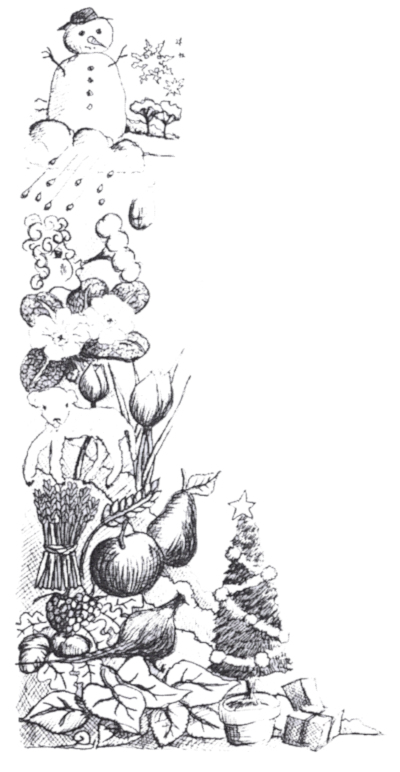
Illustration by: Paul Swailes
January brings the snow,
Makes our feet and fingers glow.
February brings the rain,
Thaws the frozen dykes again.
March brings breezes, loud and shrill.
To stir the dancing daffodil.
April brings the primrose sweet,
Scatters daisies at our feet.
May brings flocks of pretty lambs
Skipping by their fleecy dams.
June brings tulips, lillies, roses,
Fills the children's hands with posies.
Hot July brings cooling showers
Apricots, and gillyflowers.
August brings the sheaves of corn,
Then the harvest home is borne.
Warm September brings the fruit,
Sportsmen then begin to shoot.
Fresh October brings the pheasant,
Then to gather nuts is pleasant.
Dull November brings the blast,
Then the leaves are whirling fast.
Chill December brings the sleet
Blazing fire, and Christmas treat.
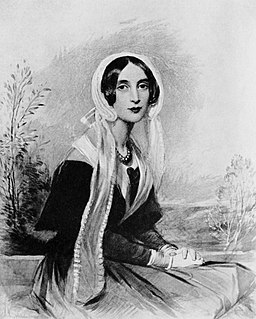
Public domain
via Wikimedia Commons
Sara Coleridge [1802-1852], an English author and translator, was the third child of Samuel Coleridge Taylor and his wife Sarah.
She married her cousin Henry Nelson Coleridge with whom she had four children, but only two survived, her son Herbert and daughter Edith.
Flanders and Swann, the English comedy duo, performed their musical revues, 'At the Drop of a Hat and 'At the Drop of another Hat' in London's West End in the late 1950's and '60's. Michael Flanders, actor and singer, and Donald Swann, composer, pianist and linguist, collaborated on many comic songs - The Gnu and the Hippopotamus Song, 'Mud, mud, glorious Mud', as well as a variation on Sara Coleridge's 1834 rhyme on weather:
January brings the snow
Makes your feet and fingers glow.
February's Ice and sleet
Freeze the toes right off your feet.
Welcome March with wintry wind
Would thou wer't not so unkind.
April brings the sweet spring showers
On and on for hours and hours.
Farmers fear unkindly May
Frost by night and hail by day.
June just rains and never stops
Thirty days and spoils the crops.
In July the sun is hot
Is it shining? No, it's not.
August cold, and dank, and wet
Brings more rain than any yet.
Bleak September's mist and mud
Is enough to chill the blood.
Then October adds a gale
Wind and slush and rain and hail.
Dark November brings the fog
Should not do it to a dog.
Freezing wet December then:
B----y January again!
Michael Flanders
.jpg)
Michael Flanders (1966 publicity photo)
English: Photograph by Bill Doll and Company,
a New York-based publicity agency
Public domain, via Wikimedia Commons
15
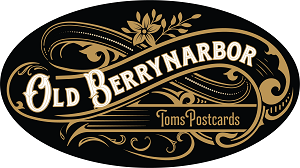
OLD BERRYNARBOR - VIEW NO. 147
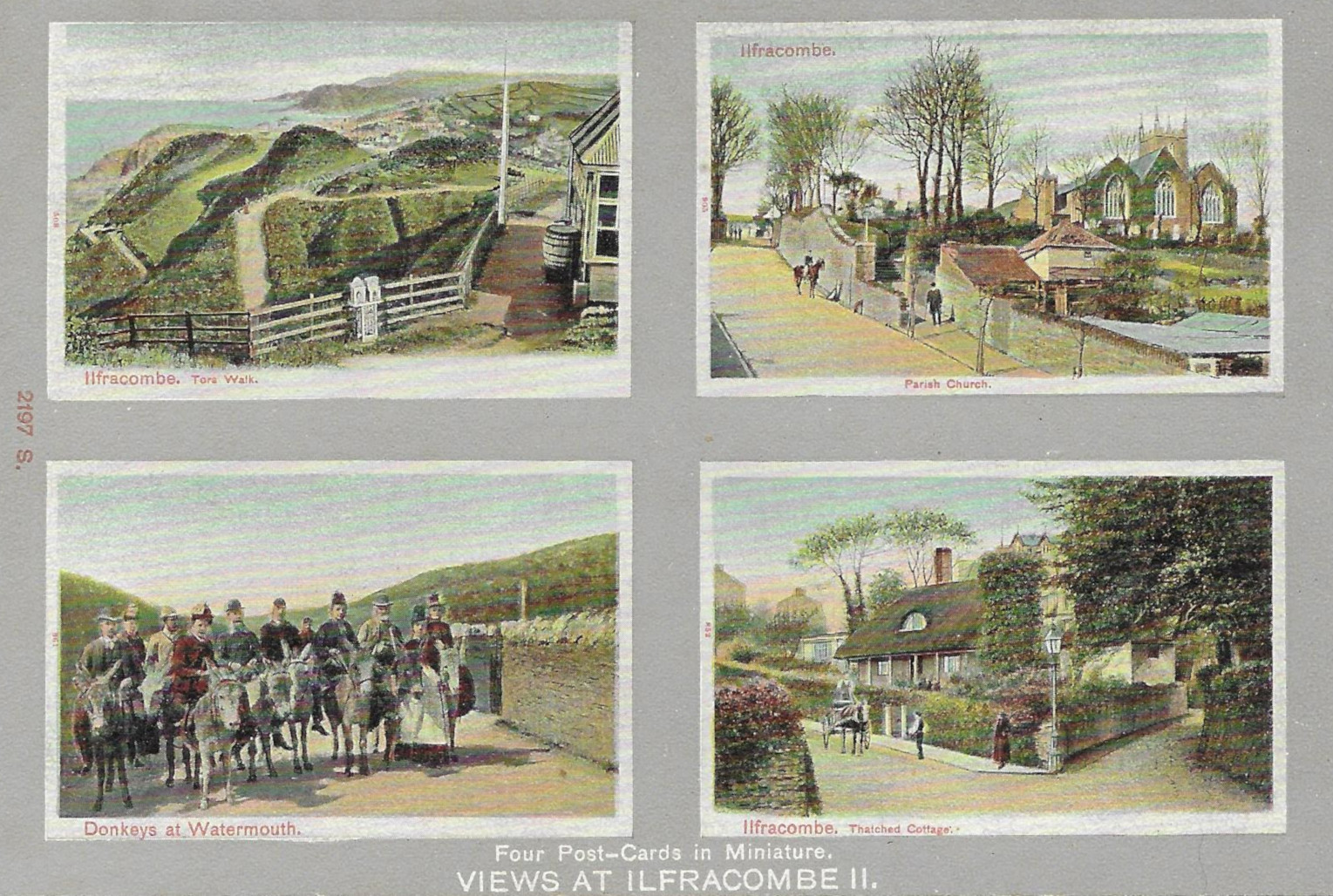
This four miniature view card was published
by The Pictorial Stationery Co. Ltd. of London under their Peacock Brand
Autochrom Postcards c1904.
The first view is of Ilfracombe, Torrs Walk and the Cafe
that was then on top, and note the chocolate bar dispensing machine in the
centre.
The second view is of Ilfracombe Holy Trinity Parish Church
and a gentleman on horseback coming down church Hill.
The third is Donkeys at Watermouth. These are the donkeys kept by Betsy
Leworthy* near the centre of the village and walked daily into Ilfracombe to
pick up visitors and take them for rides to Lee or Watermouth. Betsy can be seen standing between the two
donkeys on the far right. She was hard
working all her life and as well as managing the donkeys, was the village coal
merchant at the turn of the century.
Coal would be brought by sailing brig into Watermouth Cove at high tide
and directly the tide ran out, horse and carts from the village would run up
and down loading the coal and then unloading at Betsy's Coal Store, opposite
The Globe, for redistribution. Betsy
was born c1840 and married John Leworthy, the village blacksmith about
1851. They had many children but sadly,
in those days, the mortality rate was high and five of their children died
between the age of 11 months and 5 years.
Her tomb stone records: Beloved
children of John and Betsy Leworthy safe in the arms of Jesus. Betsy died on the 31st March 1912 aged 72, a
great loss and sadly missed by the entire village. Her husband died three years later in
January 1915 aged 74 years.
The fourth view is of the Thatched Cottage at Chambercombe,
Ilfracombe. This started as a private
residence but later became a popular public house, known as Chambercombe
Cottage, the Hermitage and now the Thatched Inn.
*Grandmother
of Annie Leworthy, 1897, who died aged 92 on 22.09.1989, and remembered by many
villagers.
Tom
Bartlett
Tower Cottage, January 2014
e-mail: tomandinge40@gmail.com
16
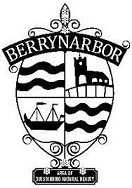
REPORT FROM THE PARISH COUNCIL
A representative from the Environment
Agency gave a talk regarding a flood plan for Berrynarbor. Initially it
involves calling a meeting of interested people to compile a draft plan, trying
out a 'dry run' and keeping it up to date.
The Police would appreciate assistance
from anyone who can help with the poaching problem which is extensive at the
present time, with particular concern about firearms shooting at night.
Details of the decision made by Devon
County Council Public Rights of Way Committee who met in November who, among
other items, made a decision not to make a Modification Order to the Definitive
Map in respect of Proposal 3.
Reports were received from County
Councillor Mrs Andrea Davis and Councillor Mrs Lorna Bowden on behalf of the
Manor Hall Management Committee.
The state of roads and paths around the
Parish were discussed.
A number of items under Matters Arising
were discussed and progressed.
6 Planning Applications were considered.
Under Finance, payments were approved
and Tenders awarded for the 2014/15 season in respect of Grass Cutting and
maintenance of seats, bus shelters and garden maintenance.
The 2014/15 Budget was set and approved
and also the Precept which is to remain unchanged at £14,980.00.
Since
the Meeting, we have heard the very sad news that Councillor Gary Marshall lost
his fight against cancer on the day of the December Meeting. We have lost an excellent Councillor who
always had a balanced view of things, was always kind, courteous - a true
gentleman. Councillor Dave Richards and I represented the Parish Council
at Gary's funeral at St Brannock's Church, Braunton, on Monday 23rd December.
At the January meeting, Councillors, Clerk
and members of the public stood in silence to the memory of the late Councillor
Gary Marshall who died on 10 December. The Clerk brought the Order of
Service for members to see and the Chairman invited her to give a short account
of the service.
Reports were received from PCSO A.
Drury, County Councillor Andrea Davis and District Councillors Julia Clark and Yvette
Gubb.
Councillor Linda Thomas reported on a
meeting held with a North Devon Council officer regarding Berynarbor's car
park. Councillors agreed that it should
remain in the ownership of the North Devon Council.
There were no planning applications to
consider. Approval notices had
been received for Forge Cottage and Hawksridge.
A number of items were discussed under
Matters Arising. Certain highways work could not be carried out due to
budgetary constraints and Councillor
Steve Hill gave an update regarding the Emergency Plan.
Under
Finance, various payments were authorised including a donation to the Citizens
Advice Bureau. The Clerk reported
she had arranged for a change in supplier for electricity to the public toilets
after a better deal had been identified.
Sue
Squire - Clerk to the Parish Council
17
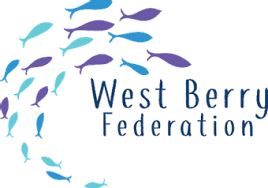
BERRYNARBOR
SCHOOL NEWS
Happy New
Year everyone!
After such a busy half term in the build
up to Christmas, the children enjoyed a fun filled two week break! Hopefully not too many were affected by the
dreadful bugs that have been doing the rounds.
Senior
Dudes Meal
Rosemoor
Trip - Whilst Class 4 prepared for their Senior
Dudes Meal the rest of the school enjoyed a trip to RHS Rosemoor. Despite the weather the children had a great
day looking around the gardens. The younger children took part in an
educational activity 'natural sculptures', whilst the older children did
'discover your tree'. We'd like to say a
big thank you to the PTA for funding the transport for this trip.
Strawberry
& Cranberry Class Nativity
Village
Carol Service
This term Strawberry and Cranberry Classes'
topic is Barnaby Bear goes to China.
Blueberry Class are learning the difference between Rural and Urban
areas and Elderberry Class are studying the science of bread.
Sue Carey - Headteacher
18
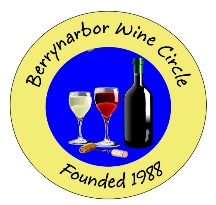
BERRYNARBOR WINE CIRCLE
'Wine
is the thinking person's health drink'
Dr
Phillip Norrie
Our November meeting was too late for
inclusion in the pre-Christmas Newsletter, so I reflect on two gatherings, in
December, for the first of 2014's Newsletters.
This month is a social month - many of us will be tippling a glass of champagne,
or a red or white and perhaps more than our usual, so I thought Dr Norrie's
statement would bring comfort to us all!
We certainly tipped a few with Jonathan
Coulthard in November. Our usual
tastings are 6, but he provided 8 wines from the Duras area. He is a producer-grower in the smallest
appellation: Cotes de Duras AOC, in the Department of Lot et Garonne, in the
region of Aquitaine, but it was one of the first: 1937. The town of Duras is close to Bergerac and
Bordeaux.
All wine was produced 'en famille': in vineyards
privately owned, generally by more than 1 generation. They all seemed to meet with approval and,
annoyingly, 7 were less than €10, but French duty is only 3 cents! The penultimate was a sweet wine - 80%
Semillon, 15% Sauvignon Blanc and 5% Muscadet, but this was €25.50. His own award-winning red: Chateau Terra
finished the evening. Another inclusion
was a 14%, €5 Merlot, 2009. This was
Domaine de Grande Mayne. Jonathan
described it as coming from a 'progressive vineyard' and was where he gained
his work experience having trained at Plumpton College.
Plumpton in East Sussex, as a matter of
interest, specialises in 'land-based courses', and is a 'Centre of Excellence
in wine education'. It is the only
Higher Education Institute to offer undergraduate degrees in Wine Business and
Production in English in Europe.
As another point of interest, a red and
a white wine from his vineyard are now stock items in our village shop. His next visit may be next year, so you need not wait for this to be able to
sample some good French wine, made from hand-picked grapes only.
Good cheer, good food and wine were
enjoyed by 52 members and friends, exactly 2 weeks before Christmas Day. 'Committee's Choice' was presented by 6 of
our 7 committee members. We began with
'bubbles': a Cava, that used to be termed 'Spanish Champagne', a Viognier and a
delicious Sancerre. These were followed
by 2 Merlots and the question was 'Which is better?' The answer was lost in the
conviviality! We ended our evening with
a superb 9-year-old Claret. This was the
dearest at £15.99, but less £3 each if 2 purchased, the Merlots were at the other
end of the scale at £6.99. All were purchased through Barnstaple's
Majestic.
Sampling a few mouthfuls of a variety of
wines at the Circle is a wonderful way to taste and discover. Our meetings provide an excellent opportunity
to sample wines and avoid the situation of buying something, for a
special occasion, and then realising that you don't like it! I have realised
that, usually, during our 8-meeting season, we get to sample 48 wines and all
for an annual fee of £5 per head and an evening charge of £6 per individual
that covers wine expenditure.
As far as I'm concerned, our winter months
can't be over soon enough and without its festive gatherings and occasional
blue-sky days, it would be even more of a lacklustre season. Thankfully, our excellent Christmas meeting
is followed by another: January's 'Call My Wine Bluff '. These have been running since 2007 and are
always a tremendous hit with our members.
Seven teams pitted their wits against
the descriptions delivered by Geoff Adam, our able Chairman Tony Summers and
John Thorndycroft. All six wines,
foil-clad, were given three plausible descriptions and, therefore, Tony said,
their night of words could be summarised by a famous Eric Morecombe quote: 'I'm
playing all the right notes, but not necessarily in the right order!'
Our wines came from France, Germany,
Spain and Australia; other whines came from the floor and were again clarified
by Tony: 'it was interesting to hear the moans and groans when answers were
wrong and the cheers when teams were right!'
The quintet winners, 'Famous Five', each walked away with a Spanish
'Reserva'.
Judith
Adam - Secretary & Promotional Co-ordinator
19
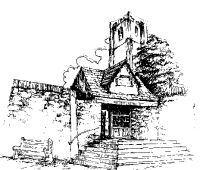
FROM THE RECTOR . . .
In
search of the Snow Leopard

Bernard Landgraf, CC BY-SA 3.0
via Wikimedia Commons.
So as 2014 begins to roll, decided yet
where you are going for a holiday this year if you can get away? Maybe circumstances or money [or both] won't
allow for that, but nice to have a break if we can, even if only for a few
days.
I am as yet undecided where my next trek
will be. In the brochure of my regular
travel company [which I cannot name as this will constitute advertising], there
is an intriguing trek in the Himalayas I might well end up pursuing. In search
of the snow leopard is the name of
the trek.
My word it looks exciting, though the
downside is camping in sub-zero temperatures which doesn't appeal so much these
days! In fact, my hands and feet begin
to chill at the thought of it. Nevertheless, the lure is there. Snow leopards are one of the world's most
elusive mammals. After a few days acclimatising in little Tibet, the trek takes
you into the heart of the mountains of the far north of India in search of this
magnificent animal.
There are dreams we never grasp. I heard of an artist who wanted to sculpt an
image of a snow leopard. His dream took
him to Siberia one winter and there he waited and waited. With rapt attention he waited. For nearly two weeks he waited. But locals were quite clear. "A
sighting is only in the gift of the snow leopard!." Two days before the end
of his stay, his attention was rewarded. There on the snow bank stood a leopard gazing
at him, allowing him to photograph before he disappeared into the white blanket
that covered the trees. The artist
returned to the spot several more times, secretly glad that he didn't see it
again - it wouldn't be the same!
There is a parallel here with a journey
into faith. The sighting of God is in
the gift of God. We must, I believe,
search for God and have a willingness to go and see and try to discover. The All-seeing identity will surely reveal
himself to you as you let go of your pre-conceived notions.
Mind
you, we have to be in the right frame of mind. There are soft moments when we glimpse the
heart of things if intentionally we are open to an encounter that in turn opens
us to new possibility.
On this sort of subject, I should like
very much to have discussions with local people about your own journey and what
you think deep down about life and faith. We will try to arrange a coffee morning in
the next few weeks but do have a word if you would welcome such a discussion.
Maybe life until now has been a bit of a trek!
So back to my brochure . . .
With
very best wishes for 2014,
Rev
Chris
20
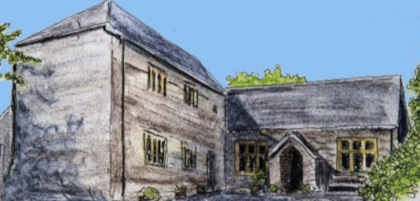
MANOR HALL TRUST
Important
news
about the Manor Hall
Our new governance document
has finally been accepted by the Charity Commission, which is great news as we
now look a bit more fit for purpose, which will be important for external fund
raising. And
we shall be seeking substantial funds given the way a host of problems are
coming to light . . .
Following on from the recent survey, the
condition of the manor house roof now requires further remedial specification
from structural engineers due to the movement of the rafters over time, and
damage by woodworm. We have therefore
been selecting appropriate consultants and timber treatment specialists, and
organising a new loft access point into the old roof from the Men's Institute
main room.
If this wasn't enough we have also
discovered extensive wet rot under the stage in the main hall, due to extreme
wetness in this area and poor ventilation under the floor. All of this is on top of the other works
needed to the original masonry to the old manor house, the replacement heater
to the main hall, and a number of other maintenance items. It really does feel that chickens have come
home to roost and we are paying for many years of minimal maintenance.
We are not yet at the stage of putting a
total cost together for all the work but the support of the village as a whole
will soon be needed to help overcome perhaps the biggest set of challenges
since the main hall was built a hundred years ago. This is not the centenary celebratory news
that we wanted to share for 2014, but then again it will be a time for some
centenary fund raising to protect and preserve this unique building.
Look out for further news over the next
few months. Your support will be much
appreciated.
Len
Narborough
The Manor Hall Committee
21
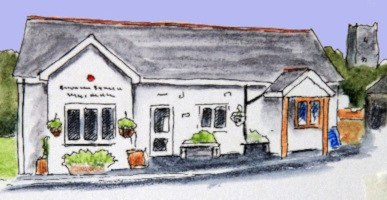
NEWS FROM OUR COMMUNITY SHOP & POST
OFFICE
Thank you to everyone for
your support of the Shop at Christmas and best wishes for the New Year.

We now have a wonderful
selection of cards and there will be special ones for Valentine's Day, so why
not buy a box of chocolate as well to give your loved one!
With various events taking
place in the next couple of months, don't forget that tickets are available
from the Shop where you can also buy your Lottery Tickets. 'You
gotta be in it to win it'!
We shall be stocking an exciting new range of Sausages from
Yetland Farm [you may have tasted them at Local Farmers Markets] from the end
of January.
Look out for New Wines on the shelves from our new local wine merchant.
Just a reminder to all the
gardeners in the village to start thinking about growing seedlings for the
Annual Village Plant and Craft Sale fundraiser for the Shop. Donations of unwanted garden tools and
gardening bits and bobs would be very welcome and can be left at the shop!
22
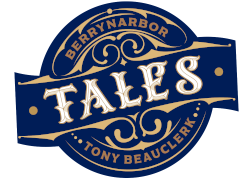
ONE STEP BACK
Do you remember Spike Milligan singing "I'm walking
backwards for Christmas"? Well the true
story I'm about to relate worked just that way!
At the time when my mother lived in a bungalow at
Billericay, most of the area - like so much of Berrynarbor - was either cesspit
or septic tank drainage.
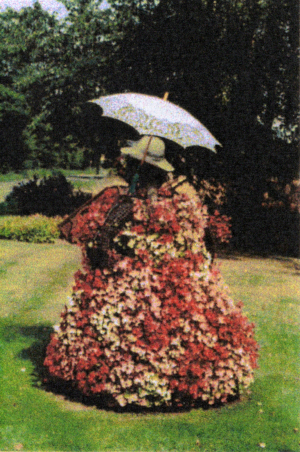
Fortunately for the residents, the local council put in main
drains in all the roads and my mother, after getting the necessary planning and
building approval, proceeded to find a small building firm to dig up her drive,
lay the drains and make the necessary connection.
The builder was Fred White and his two sons, Brian and Jack.
"Where would you like us to make the trench?" Fred enquired.
"Well," my mother replied, "I think it a good idea if you
take up the slab path leading up the drive and around the back."
"OK, we'll get right on with it." and Mr. White instructed
his sons accordingly.
The slabs up the front drive were all taken up and stacked
and then they began taking up those at the back of the bungalow.
The lads had taken up quite a number when Jack suddenly
shouted to Brian, "Don't step forward with that slab, just do as I say and step
back." Brian did as he was told and
luckily for him, he did!
The slab had been covering a well and had he stepped forward
he would have stepped straight into it, probably with the slab on top of him.
On examination, the well proved to be barrel shaped and
quite large. The back wall of the
bungalow had been built partly over it.
Mr. White and his boys filled in the well with rubble before finishing
the job.
Many years later, after my mother had moved, the bungalow
was pulled down and a pair of houses built on the site, probably over the well
as well!
Tony Beauclerk - Stowmarket
23
MARWOOD HILL GARDENS
Snowdrop Sundays and Workshop
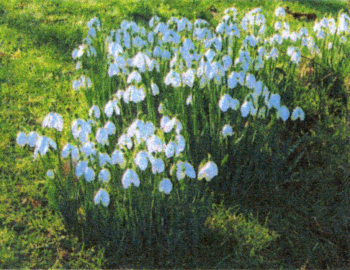
The Gardens and Tea Room will be open on Sundays 16th and 23rd February, 11.00 a.m. to 4.00 p.m. Garden entry £4.00, Children under 12 and Season Ticket holders free.
Local Artist, Christine Grafton will be holding painting workshop sessions in both the morning and aflernoon. £15 per session to include entry to the Gardens, Workshop and Materials and home-made Soup Lunch. Booking for Workshop essential. Ring 01271 342528 or e-mail marwoodgardens@btconnect.com to book or for further information.
The Gardens, Garden Tea Room and Plant Centre will reopen fully on Saturday, 15th March, 10.00 a.m. to 5.00 p.m
24
THE MOST
REMOTE INHABITED ISLAND IN THE WORLD

In 2012 we achieved a long held ambition to travel on the Royal Mail
Ship St. Helena (known affectionately as the R.M.S.) which is a small passenger
cargo ship servicing St. Helena, Ascension and occasionally Tristan da
Cunha. On that voyage she did not call
at Tristan so we decided to try for the next visit she made and were fortunate
enough to go last November.
The Archipelago of Tristan da Cunha is a British Overseas Territory
lying approximately 1750 miles from South Africa and 2100 miles from South
America, It has no airport and is only accessible by sea. The group of islands, of which Tristan is the
main island, is made up of Inaccessible, Nightingale, Middle, Stoltenhoff and
the most Southerly Gough which is approximately 40 Deg S and 10 Deg W. This is uninhabited apart from scientists who
stay there for about twelve months at a time running the weather station.
In 1961 some of you may remember volcanic action on Tristan forced the
inhabitants of the only settlement to leave in a hurry. They evacuated to Nightingale Island about 20
miles away in small open boats and were then rescued and brought back to the UK
via South Africa. The following year a
Royal Society expedition went back and found little damage to the settlement
known as Edinburgh of the Seven Seas, although the harbour landing and fish
factory had been destroyed. In 1963
most of the families returned to their tiny island.
We flew to Cape Town where we spent a few nights before joining the ship
to start our passage. Unbeknown to us
this was going to be a special trip as it was the 200th voyage of the R.M.S.
and the 50th anniversary of the return of the islanders to their homes. Before heading to Tristan, therefore, we were
first taken south on a circumnavigation of Gough Island.

Landing at Tristan is often impossible as ships anchor off and
passengers are transferred ten at a time to small R.I.B's which, due to the sea
conditions, is often very hazardous. The Captain assured us that he would do
everything he could to get us ashore even if it meant passengers having to
board the R.I.B's via the pilot's rope ladder (only the more agile would be
allowed to attempt this). In the event
we were incredibly fortunate and were able to get ashore on two days though it
was quite interesting in the sizeable swell.
The
Island is very impressive with a summit rising to 6760 feet and the settlement
where everyone lives is on a relatively small plateau between the mountain and
the sea. There are less than 270
residents, mostly descended from settlers from passing and wrecked ships and
there are only seven surnames making up the population of the island.
We were landed at the small
harbour named Calshot (after the Hampshire village which housed the Tristonians
between 1961 and 1963). Lining the
harbour wall are the small open fishing boats which are used to catch
crayfish. Because the weather conditions
can change so quickly these are craned out at the end of every fishing trip and
stand on trailers. One of the main
incomes for the island comes from the fish factory which processes the crayfish
for export. They have a quota of 150
tons a year which provides about 30 days fishing a year. Fishing days are weather dependent, the head
fisherman decides if the day is suitable and summons the rest of the men by
striking an old gas cylinder with a large hammer!

As well as the fish factory the island has a small supermarket, Island
stores for the tradesman requirements, Administrators office, communications,
police, post office (which deals with
the sales of the much sought after stamps and coins from the island), outdoor
swimming pool, and of course The Albatross Bar. The Gomogli hospital can handle simpler
things but more serious cases and all expectant mums have to go to Cape Town as
there is currently no incubator. The
settlement bungalows with their different coloured roofs and paint work are bright
and cheerful and there are two Churches, St. Mary's Anglican and St. Joseph's
R. C. and several graveyards. There is
also what must be one of the most testing golf courses with cattle and cowpats
among the hazards. In the middle of it
are several small huts housing the atomic monitoring station (C.T.B.T.O.) with
associated satellite dishes.
At
the back of the settlement is the volcano which erupted in 1961, from the top
there is a good view of Edinburgh and at the base there is the Thatched House
Museum which was built recently by a few of the older islanders to recreate an
original dwelling using authentic methods and materials.
The Islanders have a challenging life with only modest income. They keep cattle and sheep but because of the
limited grazing are restricted to two milking cows and their offspring (which
have to be killed every three years) per family and two sheep per person. The bulls appear to be communal and there are
plenty of chickens and ducks. They also
grow potatoes and vegetables in an area called the Potato Patches about a mile
and a half from the settlement. Each islander has a patch roughly the size of
an allotment and most have a small shed with a stove where they spend weekends and Christmas. When ships come in the islanders also
open their homes to visitors to provide a bit more income. They do have access to the internet and are
able to shop online but deliveries can take several months, so things like
Christmas presents have to be planned early.
They are very friendly people and love
their island despite its hardships and inconveniences and it was a fascinating
place to visit. Tristan da Cuhna
has a good website for anyone interested.


Sue and Simon
25
POTHOLES
Why do they jump into our path without warning!
As I write this weather forecasters are already warning of a wet start to
2014. All of us who use the roads will know that means - Potholes - one of the blights of the pneumatic tyre. If any readers are still using the solid tyres I should imagine they are lasting well, although you are probably suffering with some form of back ailment! For the rest of us it is worth taking a couple of minutes to check over our tyres reasonably regularly.
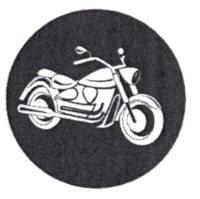 Tyre pressures for example mean that many people get only half the potential life from their tyres simply because they are underinflated and wear unevenly.
Tyre pressures for example mean that many people get only half the potential life from their tyres simply because they are underinflated and wear unevenly.
It is all too easy to miss seeing potholes - especially in the dark. I should know - I've run into one damaging both my tyre and rim on my car. You may be surprised to know that you can make a claim against Devon Highways for that damage - again something I did, successfully, within the last couple of years. Reporting defects or enquiring about a claim can be done by logging on to www. devon.gov.uk /road maintenance, or alternatively ringing 0845 155 1004, which I found to be the easier way of reporting. Just make sure you have as exact a location as possible with map ref. if able. A claim will only be considered if the pothole had been reported to Highways prior to the damage. That's why it's so important to get them reported as soon as possible.
As a retired police biker now running my own safer riding business aimed at both the seasoned rider as well as those who have recently joined the ranks of the powered two wheelers, I hear regularly about the state of the county's roads. Riding can be hazardous at the best of times but potholes can make some roads a real obstacle course.
This being the case I should politely ask those other road users out there, that when passing motorcycles, take a moment to think about how difficult it can be on two wheels to negotiate surface water, debris and whatever else may lie in our paths as we go about our business. Don't forget there are many who have no option but to ride in all seasons.
Anyone interested in taking advanced /safer riding tuition please log on to www.revolutionbiketraining.co.uk or ring and leave details on 0843 289 3529
Paul White - Barton Lane
26
VOLUNTEER OPPORTUNITIES AT ARLINGTON COURT

With the new year just beginning, now is the perfect opportunity to try something different. At Arlington we currently have around 180 volunteers who help us with various tasks throughout the year, but we're still in need of some more help. The amount of time given by each volunteer differs - some give a day a week to welcome visitors in the house or carriage museum, some just help with children's activities in the school holidays, whilst others offer time fortnightly driving the buggy or assisting the rangers.
In 2014 we have some exciting new roles on offer, with which we hope to create a new way of volunteering. One of these posts is an outdoor admin. assistant, who will help co-ordinate the paper work of the busy outdoor department, answer calls and support the team with general admin. duties. Another new exciting opportunity is a social and digital media volunteer to organise Twitter and Facebook posts for the property and format articles for the website. The great thing with all of these roles is that the time commitment can be flexible and the social and digital media post can even be done from home.
Other roles we're recruiting for include education rangers, gardeners, room guides, raffle ticket sellers, catering assistants and rangers. As well as the benefits of working in beautiful surroundings, being part of a friendly diverse team and meeting interesting new people, National Trust volunteers can qualify for free entry to all National Trust sites and 20% discount in NT shops, tea rooms and holidays after making a firm commitment and completing an initial 50 hours volunteering.
To find out more, please come to one of our volunteer recruitment days between 15th and 21st February from 11.00 a.m. and 1.00 p.m.
There will be a chance to find out more about the work on offer, chat to existing volunteers to discover what it's really like being a National Trust volunteer and explore Arlington. If you're unable to make the recruitment week or would like more information in advance, please contact Kate Christmas on 01271 851126.
27

North Devon Voluntary Services Ltd
Can you spare a few hours? Or can we help you? The Direct Services Project aims to provide volunteer Befriends, Gardeners, Wheelchair Escorts, Shoppers and Dog Walkers for people in need in lifracombe and surrounding areas.
01271 866300
Maggie@ndvs.org.uk - www.Do-it.org.uk
149 High Street, Ilfracombe, EX34 9EZ
Registered Charity No. 1133707
28
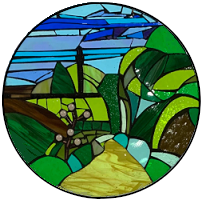
RURAL REFLECTIONS NO. 61

This is in contrast to the dramatic
sloping ground both ahead and to my right, field's vast pasture eventually
levelling where it meets its boundary hedge on the far side. From here on the ground stays even, ultimately
becoming the flood plain for the Taw estuary. The estuary is a feature whose presence on the
scene never stays still as a consequence of its lunar
guidance. But today its master is
invisible, the moon absent from any of the sky's blue punctures that are dotted
above the vista. Instead it is the sun that directs visual proceedings,
courtesy of one of the myriad of small shower clouds in the sky. Delicately decanting raindrops upon Lundy, the
sun sends its beams through the shower and creates a sharp prism that
vertically rises up from the island's flat and barren land; a land that, seen
from a distance, impersonates a perfectly chiselled stone slab. The slab appears to sit upon welsh slate, such
is the colour of the surrounding water. It is only
when one looks closer to hand does one observe the maroon-grey liquid crossed
by lines of white, some broken and others uninterrupted, created by the Bideford
Bar. Its aggressive roar reflects recent
stormy weather and overrides other noises afforded by distant sheep, nearby
jackdaws and traffic on the estuary road. The never-silent Bar demonstrates the clash of
personalities where the Taw and Torridge rivers meet. Watching this argument form the side-lines
are the dunes of the Northam and Braunton Burrows respectively, both stretching
out into the sea to sandwich the Bar.
Like the burrows, the remaining natural
landscape is devoid of trees but for some clumps in the near distance and a
wood of conifers sprawling across a far ridge. The barren rural portrait is enhanced by the
unornamented peninsulas of Hartland Point and Baggy Point. It is therefore manmade structures that catch
the one's eye whilst witnessing the blatant cloud transformations and the
refined tidal fluctuations. One's visual
radar espies at first the monstrous windmills upon Fullabrook Down; the urban sprawl of Braunton and Wrafton; rotating blades that elevate the air sea rescue
helicopter up and away from Chivenor air base; the Lego-like low bridge
crossing the River Caen at Velator Quay; the small industrial estate and modest oil
refinery that lay adjacent to the site of the old Yelland Power Station; the unemployed jetty pointing into the water
like a little finger daring to test the temperature; Crow Point's compressed lighthouse; the snug cottages of Appledore; and the
insignificant pylons that blend with the green hills behind them to go almost
unnoticed.
One feature, however, continually draws
the eye whilst stood at the gate. It is
a white building built into the cliffs that can be viewed from any high ground
(and low ground along parts of the estuaries) surrounding the vast Barnstaple
and Bideford Bay; a building that is an
icon of the 1930's Art Deco period; a
building that acts as a beacon in summer hazes, autumn mists, winter drizzle
and spring sunshine - the Saunton Sands!
Illustrated by: Peter Rothwell
Steve McCarthy
30
TREV'S TWITTERS
A Tragedy
A man had his nose cut off from his head.
An operation was performed
But then t'was found he was deformed.
Ah, ha, ha, ha, deary me
Then it began to rain, you see.
His nose was on the wrong way round;
The rain came in and he was drowned.
A Tommy Handley song from ITMA - It's
That Man Again], part of the BBC's contribution to keeping the nation cheerful
during WWII.
Blow, blow, thou winter wind
Blow, blow, thou winter wind
Thou art not so unkind
As man's ingratitude;
Thy tooth is not so keen,
Because thou art not seen,
Although thy breath be rude.
Heigh-ho! sing, heigh-ho! unto the green holly:
Most friendship if feigning, most loving mere folly:
Then heigh-ho, the holly!
This life is most jolly.
Freeze, freeze thou bitter sky,
That does not bite so nigh
As benefits forgot:
Though thou the waters warp,
Thy sting is not so sharp
As a friend remembered not.
Heigh-ho! sing, heigh-ho! unto the green holly:
Most friendship is feigning, most loving mere folly:
-Then heigh-ho, the holly!
This life is most jolly.
William Shakespeare
Captain Stratton's Fancy
And some are all for dancing by the pale moonlight;
But rum alone's the tipple, and the heart's delight
Of the old bold mate of Henry Morgan.
Oh some are fond of Spanish wine, and some are fond of French,
And some'll swallow tay and stuff fit only for a wench;
But I'm for right Jamaica till I roll beneath the bench,
Says the old bold mate of Henry Morgan.
Oh some are for the lily, and some are for the rose,
But I am for the sugar-cane that in Jamaica grows;
For it's that that makes the bonny drink to warm my copper nose,
Says the old bold mate of Henry Morgan.
Oh some are fond of fiddles, and a song well sung,
And some are all for music for to lilt upon the tongue;
But mouths were made for tankards, and for sucking at the bung,
Says the old bold mate of Henry Morgan.
Oh some are fond of dancing, and some are fond of dice,
And some are all for red lips, and pretty lasses' eyes;
But a right Jamaica puncheon is a finer prize
To the old bold mate of Henry Morgan.
Oh some that's good and godly ones they hold that it's a sin
To troll the jolly bowl around, and let the dollars spin;
But I'm for toleration and for drinking at an inn,
Says the old bold mate of Henry Morgan.
Oh some are sad and wretched folk that go in silken suits,
And there's a mort of wicked rogues that live in good reputes;
So I'm for drinking honestly, and dying in my boots,
Like an old bold mate of Henry Morgan.
John Masefield
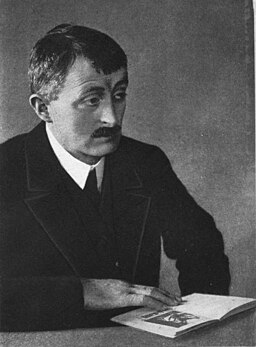
John Masefield, 1917
Public domain, via
Wikimedia Commons
John Edward Masefield, O.M. [1878 - 1967] was an English poet and writer, and Poet Laureate of the United Kingdom from 1930 until his death in 1967.
He is remembered as the author of the classic children's novels The Midnight Folk and The Box of Delights, and poems, including Sea-Fever and Cargoes.
Trev
31
QUICK QUOTE
"Never sacrifice excellence for mere popularity."
Joshua Reynolds
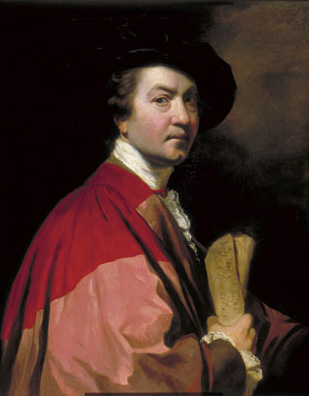
Sir Joshua Reynolds
by Joshua Reynolds, Public domain, via Wikimedia Commons
Sir Joshua Reynolds PRA FRS FRSA [16 July 1723 - 23 February 1792] who was born in Devon, was an influential eighteenth-century English painter, specialising in portraits and promoting the "Grand Style" in painting which depended on idealization of the imperfect. He was one of the founders and first president of the Royal Academy, and was knighted by George Ill in 1769.
In early 2007, Plymouth City Museum and Art Gallery acquired 23 portraits from the Trustees of the Port Eliot Estate through the Acceptance in Lieu scheme. The works have remained in situ at Port Eliot. The core of the acquisition is a group of 14 works by Sir Joshua Reynolds, one of Plymouth's most famous artists, with a further nine painted by some of his contemporaries.
If you are planning a day out, Port Elliot is well worth a visit. It is situated in the village of St. Germans, on the Rame Peninsular, South East Cornwall, not too far from Plymouth. The Round Room contains a mural painted by Robert Lenckiewicz, regarded as his masterpiece. It has to be seen to be believed!
Why not also visit nearby Mount Edgcumbe. This beautifully kept stately home [owned jointly by Plymouth City and Cornwall Councils] overlooks Plymouth Sound.

Port Elliot, St. Germans, South East Cornwall
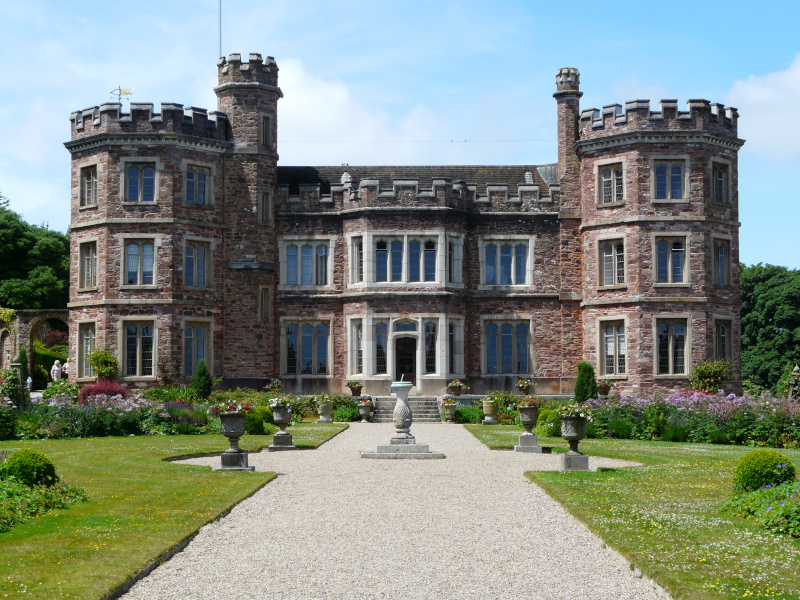
Mount Edgcumbe, Plymouth
Photographs by: Judie Weedon
32
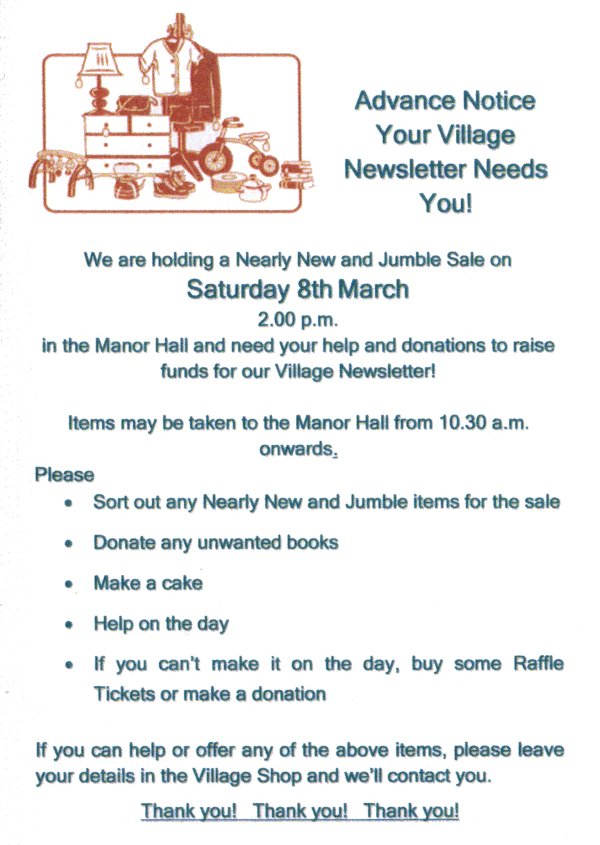
33

34
CROSSWORD ANSWERS
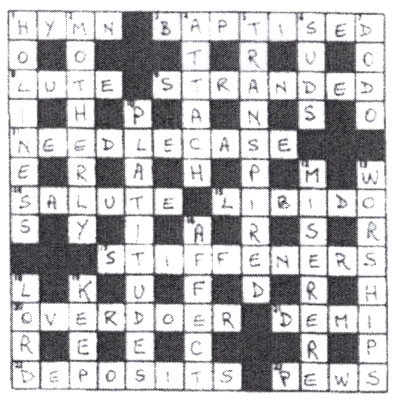
35
OUR ADOPTED PUPPIES
Our adopted puppies, Alfred and Amelia, are no longer
puppies but now working dogs helping their partners to live more fulfilled and
happy lives.
Both are doing well, Alfred assisting Daniel to do the
shopping and socialise with friends, and Amelia helping Maureen from getting up
in the morning to going to bed at night.
Amelia says that she helps Maureen to dress and fetches clothes for her
to put on, but she can't always guarantee that they will match - her fashion
sense is not so good!
To learn more about what these
incredible dogs achieve, do read their Christmas letters on the board in the
Manor Hall or go to the website: caninepartners.org.uk.
To adopt Alfred and Amelia we send an annual sum to Canine
Partners from money raised through the Newsletter and events such as coffee
mornings and have done so now for more than four years.
36

KNIT & NATTER
Once again the Craft Group will be holding an afternoon of
knitting and nattering to raise funds for the North Devon Hospice and invite
you all to come and join them. We shall
be holding Open House in the Manor Hall during the afternoon of Monday, 24th
February from 2.00 p.m. onwards.
Knitters, knitting strips for blankets for the Hospice, will only need
some odd wool and size 8 needles and those who would just like to natter can
pop in at any time during the afternoon for a chat, enjoy a coffee or tea and a
cake and have a go at the raffle. All
you would be asked for is a minimum donation to the Hospice of £5.00. Over the years the group, together with
friends, has raised over £3,500 and probably half a mile of strips!
A reminder that the Craft Group meets every Monday afternoon
in the Manor Hall, from 1.45 p.m.
Everyone is welcome. Just come
along and bring whatever you are currently working on - knitting, embroidery,
beading, painting, etc. - chat amongst friends and enjoy tea or coffee and
biscuits - chocolate ones are the favourite and very often birthdays are
celebrated with delicious cakes. All
this for just £2 a session!
Once a month, usually on the first Monday, Chris Grafton
takes an art group alongside the craft group - again everyone is welcome. Come along and have a go, £5.00 a session.
37
MOVERS AND SHAKERS - NO. 49
WILLIAM FREDERICK ROCK
[29th Jan 1801 - 9th Feb 1890]
London Print Publisher and "Barum's greatest Benefactor"
Last Christmas we had an unexpected
and pleasant surprise from Tom - a copy
of Barnstaple and Around Part II, the fourth in his Postcards of North Devon
series. I'd
only reached page 9 when a photo of a white-bearded man caught my eye: 'W. F. Rock Esq.', read the caption, 'Barnstaple's
benefactor'. Who was he? I had
to find out! This gentleman turned out
to be a great 'Mover', both locally and in his adopted home.

William Frederick Rock was baptised on
January 29th 1802 in Barnstaple's Parish Church of St Peter [hence the question
mark over his actual birthday]. He was
the oldest child of seven children born to Henry
and Prudence Rock, although a boy and girl died as babies. Henry was a respected shoemaker, living above
the shop at 46 High Street [demolished many years ago]. Money was tight, but the parents worked hard
bringing up their family. Rock later
wrote of his childhood:
Content in humble life, and not a dream,
A youthful couple ply their lowly trade
Around the boots and shoes but lately made,
The well-formed mother rocks her cradled boy,
While piles of work her busy hands employ.
As a tradesman's son, William would
normally have had only a basic education before being apprenticed. It is thought that he attended his
grandmother's school in Newport. His
father, however, became a freeman of the borough and therefore one of the few
Barnstaple people entitled to vote. Consequently,
he met William Busk, a parliamentary contestant who stayed briefly with the
family and took an interest in nine-year old William, getting him a place at
Christ's Hospital Bluecoat School in London in 1811.
He left school in January 1817. His first job, at Mr Ley's Bank in Bideford,
came about through his bravery. A
neighbour who worked in Barnstaple Bank had a son, a friend of William's, who
fell into the River Taw and was pulled out, half drowned. The doctor asked for a volunteer to climb into
the lad's bed to try to warm and revive him.
William offered and although the boy died, his father never forgot his
bravery and recommended him for the bank job. Rock's poetry was, however, his undoing as he
was several times caught writing not working, So he left and returned to London, where
another parliamentary candidate, Alderman Atkins, gave him a job at his bank.
He then worked for the printer and
inventor Thomas de la Rue. Here he made
enough money to set up his own business in London. Always a man devoted to his family, in 1833
his parents and sisters, Ann and Prudence, joined him. The sisters set up an Ornamental and
Stationers shop in Greenwich.

His brother Henry became a partner in
the new company, and in 1838, his youngest brother, Richard, also became a
partner. They were joined by a trusted friend, John Payne and formed Rock
Brothers and Payne. John later married Prudence, and their married
life was spent living with William.
The company specialised in steel
engraved views for cards, stationery, books and booklets became very successful
and created a lot of wealth for the family.
William never married, and so with
neither wife nor children to support, he decided to help both the place of his
birth, and his adopted home.
In Greenwich, he was greatly respected
and played an active role in public service. His long-term legacy was to found the Miller
Hospital, named after Canon Miller for whom he had great respect. He and Prudence gave money towards founding
the Hospital, and then gave annual subscriptions to finance it.
William Rock never returned to
Barnstaple to live, although he kept in touch through J.R. Chanter, his 'man on
the ground' and through letters to the North Devon Journal. His public benevolence, however, began in
1845 with the foundation of the Literary and Scientific Institute. In 1887, he bought the house on The Square,
built for William Thorne15 years earlier [who it is said never lived there]. The following year he opened it to house a
free library and museum: the North Devon
Athenaeum. Here there were no separate reading rooms for men and women as he
felt that it would only encourage the women to gossip! [As if they would..] It
inherited the collections of the Literary and Scientific Institution and also
became an unofficial collector of records.
Incidentally, in 1956 the Athenaeum
shared the building with the local branch of the County Library Service and in
1988 North Devon District Council bought the building and re-housed both the
Library and the Athenaeum in new premises in Tuly Street, where they remain to
date. Rock's building is now the site
for the Museum of Barnstaple and North Devon, and Tourist Information.
In 1873 William bought up land next to
Chanter's Green, a marshy area at the end of Litchdon Street and in 1879, just
a year before his death it became Rock Park and Sports Ground. A
granite obelisk at its entrance commemorates this gift, with an inscription
that ends "It is hoped the public
will protect what is intended for public enjoyment".

A letter in the North Devon Journal
wrote in praise of his 'munificent gift' and called for another park the other
side of Barnstaple, suggesting Lord Rolle might donate the land. As Peter Christie says in his fascinating
book Sir - Letters to the Editor of the North Devon Journal 1824-1874
[available at the museum] 'It never
happened, but wouldn't it have been marvellous to have had Rock and Rolle parks
in the town?' Mortehoe also benefitted
from his generosity when he founded the Convalescent Home.
Although his parents died in1846, the family
stayed together. All 3 brothers had
houses in Greenwich. Henry Rock died in 1868, Richard in 1870 and Prudence's
husband, John in 1882. William and
Prudence continued living together until his death on February 9th 1890 at the
age of 88. Prudence died just a month
later. They had shared a home for 64
years.
William was, by all accounts, a modest
man and J.R. Chanter said of him that many people did not realise the full
extent of his beneficences, but only a few knew the enormous sum he had spent
on private benevolence.
William Rock let it be known that he
preferred to be his own executor, distributing funds in his lifetime so that he
could see the results of his work and this he surely did.
At the time of his funeral in London,
shops and businesses in Barnstaple closed and a civic parade led hundreds of
mourners to the Parish Church to remember 'Barum's greatest benefactor'. He was quite a man!
My grateful thanks to the Museum of
Barnstaple and North Devon for their help.
PP
of DC
38
THE REBUILDING OF ST. PAUL'S 1678
There was a long pause after the Great
Fire of London in 1666 while the authorities looked about them for the best way
to proceed with the rebuilding of London. St. Paul's Cathedral was just one of 87
churches which had been totally destroyed. Christopher Wren and other architects
produced plans for new streets and buildings within days of the fire
burning itself out but none was feasible without vast financial investment and
draconian laws to enable the compulsory purchase of land.
Even with these problems resolved, there
would have been a considerable delay before work could start; enormous amounts
of materials had to be gathered together and specialist labour had to be
recruited before London could commence the re-creation of some of its landmark
buildings plus there was a niggling sea-based war with the Dutch to resolve
first!
The years dragged by and it was not
until 1670 that work began on the reconstruction of some, if not all, of the
churches. Between 1670 and 1696
Christopher Wren and Robert Hooke designed and built 51 new churches. The last to be started, in 1675, was St.
Paul's Cathedral, built to a
magnificent design by Wren which took until 1710 to fully complete although they were able to hold the
first service there in 1697,
It was
a massive project and every parish in the country was required to contribute
towards the expense. The details of most
[but not all] individual contributions were recorded and retained in the
library of the Guildhall in London for centuries, providing a valuable record
of names and, sometimes, even details of an individual's status within the
community.
The
record for the Parish of Berrynarbor and the amounts donated make interesting
reading - several the names are still
found locally today.

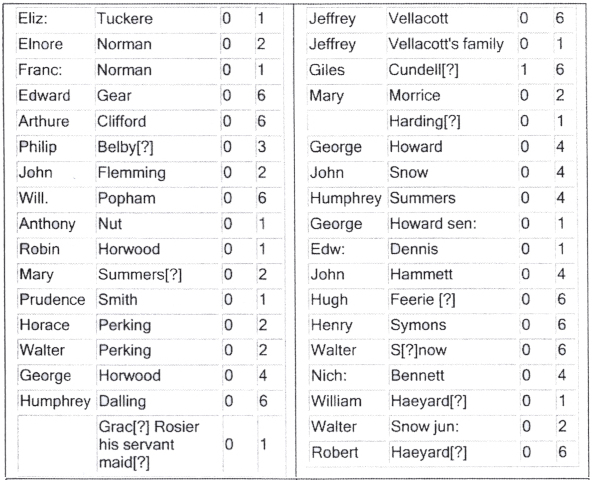
* John Berry [2s6d] was at that time Lord of the Manor, Dorothy [1s6d] his wife and Dorothy Parkham [2s] his mother-in-law.
** Henry Chichester of Shirwell [originally of Bittadon] who died c1705, was the father of 3 sons, Henry, Edward and Amias, all Cambridge Alumni. Henry, [10s] who inherited a share in certain Ackland properties, possibly through his step-mother, was Rector of Berrynarbor from 1674 until his death in 1714. His son Edward was also Rector of Berrynarbor from 1714 to 1731, and Vicar of Northover.
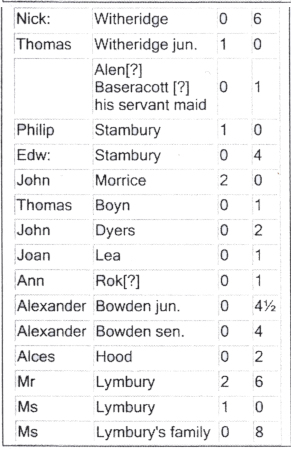
The total amount contributed by Berrynarbor was £2.7s.01/2d.
It is difficult to equate today's prices with those of 1678, but the ten shillings Henry Chichester donated was a substantial amount.
Note the Bowden's - all related by many 'g's to Michael and his family.
Lorna Bowden
39
WEST COUNTRY WALK - 142
'And all things draw toward St.
Enodoc. Come on! Come on!'
John Betjeman
It was a sunny Sunday one September when we walked from
Polzeath along the Camel Estuary to Trebetherick, to visit St. Enodoc church,
half hidden amid the dunes.
The coast path took us along The Greenaway where former poet
laureate Sir John Betjeman spent his childhood holidays. In 'Summoned by Bells', the blank verse
autobiography of his early years, he describes gales slamming the bungalows and
rattling the doors when 'enormous waves house-high rolled thunderous on
Greenaway, flinging up spume and shingle to the cliffs.'

He recalled his fear of falling when climbing these steep,
smooth cliffs, with only a narrow ledge to rest his feet and clutching a clump
of sea pinks. The cliffs which had
appeared so tremendous as a child but to the adult Betjeman seemed small.
From The Greenaway there are views across the estuary to
Stepper Point and below, the beach where before breakfast he had 'run alone,
monarch of miles of sand . . . and walked, where only gulls and oystercatchers
had stepped before, to the water's edge.'
Here still were the shells, lumps of driftwood and heaps of
bladderwrack like those observed by an Edwardian childhood more than a century
ago.
We rounded Trebetherick Point to reach Daymer Bay, a popular
beach sheltered by Brea Hill to the south and then on to the lane in 'whose
ferny ramparts' were pennywort, toadflax, fennel and periwinkles. In his poem Betjeman referred to the
honeysuckle hedge; mint around the
spring; the coconut smell of gorse and
the thyme scented links.
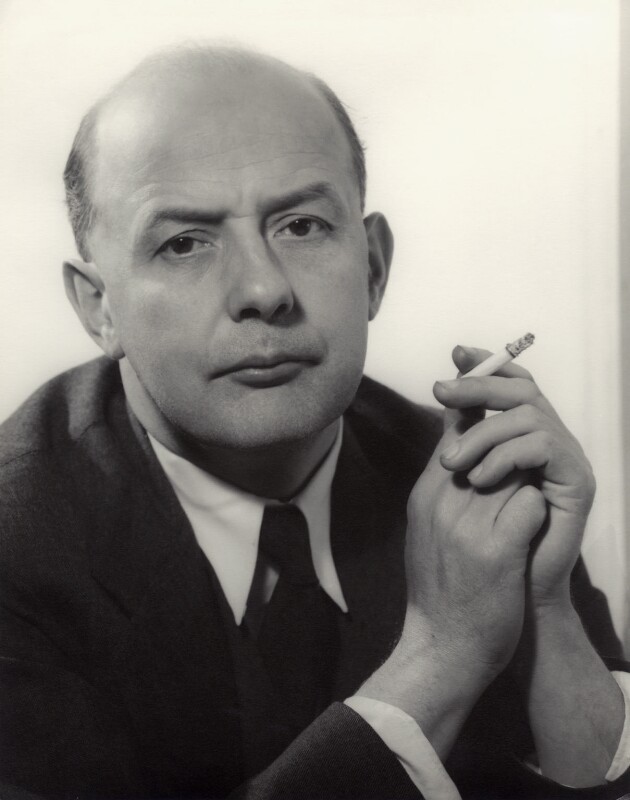
Sir John Betjeman
by Howard Coster
bromide print, 1953
Given by the estate of Howard Coster, 1959
NPG x943
© National Portrait Gallery, London
Licenced under CC BY-NC-ND 3.0
The lane ended abruptly and we followed a path for about a
quarter of a mile to reach St. Enodoc surrounded by tamarisk and rabbits - and
strangely, by golfers for the little church is on a golf course and it is
necessary to keep a lookout for flying golf balls.
It was once known locally as 'sinkinny
church', the sinking church after it had become buried in the sand, which had
drifted against the walls and when the roof gave way the sand found its way
inside too, so that entry could only be made through the roof.
Eventually the church was restored in 1864 when all the sand
was removed and the Norman font recovered.
There is a holy water stoop near the door and the remains of a fifteenth
century carved screen between the chancel and the nave. Flanking the path to the church door are
some medieval stone mortars once used for grinding corn.
St. Enodoc has a short thirteenth century tower bearing a
leaning spire. It has a bell taken from
an Italian ship wrecked off The Greenaway in 1875. It was the site of many burials of unknown
sailors whose ships were wrecked on the Doom Bar while seeking shelter in the
Camel Estuary.
Between
the church and the sea are the remains of a village which had to be abandoned
in a hurry when it was overwhelmed by a sand storm.
It was hard to imagine the turmoil of ship wrecks and sand
storms during our visit to St. Enodoc.
All was peaceful and calm and we could appreciate why John Betjeman had
such happy memories of the place and wished to be buried there. His grave is in the churchyard, near the
lych gate.
[Quotations
taken from 'Summoned by Bells' and the poem, 'Sunday Afternoon Service in St.
Enodoc Church, Cornwall' by John Betjeman 1906-1984.]
Illustration by: Paul Swailes
Sue H
40
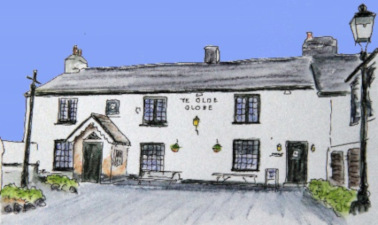
NEWS FROM THE GLOBE & SAWMILL INN
- Valentine's Day - Friday 14th February: Book Early for a table to treat your loved one to a candlelit meal! Choose from the Menu or the Valentine Specials, plus enjoy a few little extra touches to make your evening special.
- Mother's Day - 30th March: Another one to Book Early for as it does get pretty busy. 'Phone us at the Sawmill on [01271] 882259 or at the Globe on 882465
- Beetle Drive with Fish and Chip Supper - Friday 28th February: The Globe, £4.00 per person. Put your names down on the list in the bar.
- Murder Mystery Night - Friday 21st March: The Globe - look out for details nearer the time. Please put your names down on the list at the bar if you are interested in coming
We are now doing Take-away Curries [and a few other items] at The Globe, available every night 6.00 to 9.00 p.m. Please ask if you would like to look at our Take-Away Menu. Phone orders welcome.
41
AT-A-GLANCE DIARY
| JANUARY | |
| 31st | Fun Quiz and Supper Evening, Manor Hall, 7.00 p.m. |
| FEBRUARY | |
| 5th | Mobile Library in Village from 10.55 a.m. |
| 8th | Beaford Arts: Bread & Circuses, Wot No Fish, Manor Hall, 7.00pm |
| 11th | Parish Council Meeting, Parish Room, 7.00 p.m. |
| 14th | Valentine's Day |
| 15th | Arts & Crafts ACTIVITY DAY, Manor Hall, 10.30 a.m. onwards |
| 16th | Snowdrop Day & Art Workshop, Marwood Hill Gardens, 11.00 am |
| 17th | to Friday, 21st: College and Primary School Half Term |
| 19th | Mobile Library from 10.55 a.m. Wine Circle, Manor Hall, 8.00 pm |
| 23rd | Snowdrop Day & Art Workshop, Marwood Hill Gardens, 11.00 am |
| 24th | Knit and Natter for North Devon Hospice, Manor Hall, 2.00 p.m. |
| 25th | Berry in Bloom & Best Kept Village Meeting, The Globe, 7.30 p.m. |
| 26th | Friendship Lunch, The Globe, 12.00 noon onwards |
| 28th | Beetle Drive & Fish and Chip Supper, The Globe |
| MARCH | |
| 1st | Pre-School Jumble Sale, Manor Hall |
| 5th | Mobile Library in Village from 10.55 a.m. |
| 8th | Nearly New & Jumble Sale for Newsletter, 10.30 a.m. & 2.00 p.m. |
| 11th | Parish Council Meeting, Parish Room, 7.00 p.m |
| 19th | Wine Circle, Manor Hall, 8.00 p.m. |
| 21st | Murder Mystery Night, The Globe |
| 26th | Friendship Lunch, The Globe, 12.00 noon onwards |
| 30th | St. Peter's Mothering Sunday. British Summer Time begins |
| APRIL | |
| 4th | College & Primary School: End of Spring Term |
| Manor Hall Diary | |
| Mondays | Upholstery, 9.00 to 1.00 p.m. Craft Group 1.45 p.m. Badminton, 7.30 p.m. |
| Tuesdays | N.D. Spinners [2nd & 4th] Yoga, 7.00 p.m. |
| Wednesdays | Pilates Body Workout, 9.00 a.m. |
| Thursdays | Watercolour Painting 10.00 a.m. [in 10 week term] |
| Fridays | Toddlers Soft Play and Activity a.m. Primary School p.m. |
| Penn Curzon Room | Pre-School: Mon/Tues 9.00 am - 3.00 pm Wed/Thur/Fri 8.30 am - 3.00m p.m. |
| Mobile Library - Assistant: Jacqui Mackenzie | |
| Village Shop : 10.45-11.30 a.m. Sterridge Valley : 11.45-12.15 p.m. | |
42

Artwork by: Debbie Cook
43
